Honglak Lee
University of Michigan, Ann Arbor
High Fidelity Video Prediction with Large Stochastic Recurrent Neural Networks
Nov 05, 2019


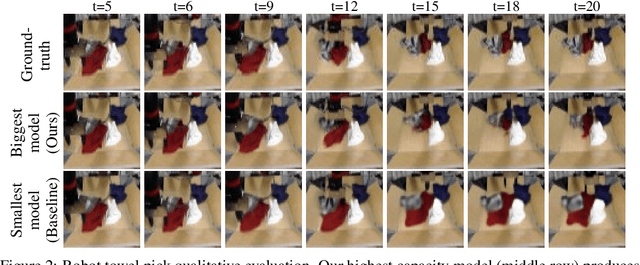
Abstract:Predicting future video frames is extremely challenging, as there are many factors of variation that make up the dynamics of how frames change through time. Previously proposed solutions require complex inductive biases inside network architectures with highly specialized computation, including segmentation masks, optical flow, and foreground and background separation. In this work, we question if such handcrafted architectures are necessary and instead propose a different approach: finding minimal inductive bias for video prediction while maximizing network capacity. We investigate this question by performing the first large-scale empirical study and demonstrate state-of-the-art performance by learning large models on three different datasets: one for modeling object interactions, one for modeling human motion, and one for modeling car driving.
Consistency Regularization for Generative Adversarial Networks
Oct 26, 2019

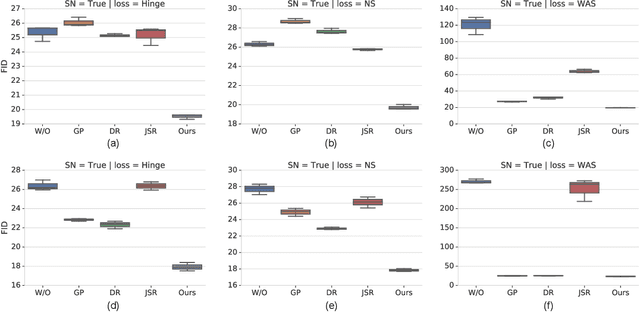

Abstract:Generative Adversarial Networks (GANs) are known to be difficult to train, despite considerable research effort. Several regularization techniques for stabilizing training have been proposed, but they introduce non-trivial computational overheads and interact poorly with existing techniques like spectral normalization. In this work, we propose a simple, effective training stabilizer based on the notion of consistency regularization---a popular technique in the semi-supervised learning literature. In particular, we augment data passing into the GAN discriminator and penalize the sensitivity of the discriminator to these augmentations. We conduct a series of experiments to demonstrate that consistency regularization works effectively with spectral normalization and various GAN architectures, loss functions and optimizer settings. Our method achieves the best FID scores for unconditional image generation compared to other regularization methods on CIFAR-10 and CelebA. Moreover, Our consistency regularized GAN (CR-GAN) improves state-of-the-art FID scores for conditional generation from 14.73 to 11.67 on CIFAR-10 and from 8.73 to 6.66 on ImageNet-2012.
IEG: Robust Neural Network Training to Tackle Severe Label Noise
Oct 13, 2019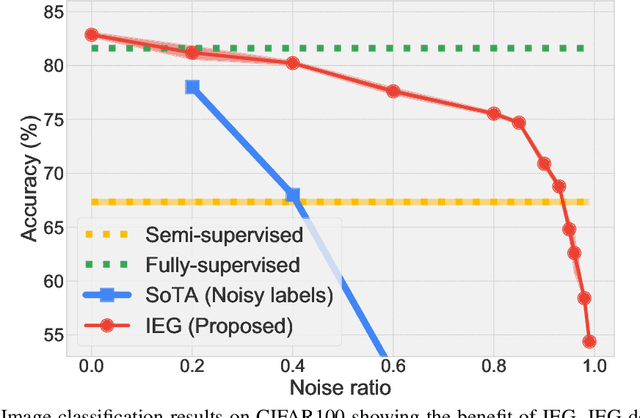

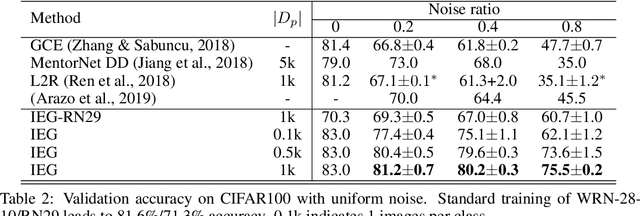

Abstract:Collecting large-scale data with clean labels for supervised training of neural networks is practically challenging. Although noisy labels are usually cheap to acquire, existing methods suffer severely for training datasets with high noise ratios, making high-cost human labeling a necessity. Here we present a method to train neural networks in a way that is almost invulnerable to severe label noise by utilizing a tiny trusted set. Our method, named IEG, is based on three key insights: (i) Isolation of noisy labels, (ii) Escalation of useful supervision from mislabeled data, and (iii) Guidance from small trusted data. On CIFAR100 with a 40% uniform noise ratio and 10 trusted labeled data per class, our method achieves $80.2{\pm}0.3\%$ classification accuracy, only 1.4% higher error than a neural network trained without label noise. Moreover, increasing the noise ratio to 80%, our method still achieves a high accuracy of $75.5{\pm}0.2\%$, compared to the previous best 47.7%. Finally, our method sets new state of the art on various types of challenging label corruption types and levels and large-scale WebVision benchmarks.
A Simple Randomization Technique for Generalization in Deep Reinforcement Learning
Oct 11, 2019
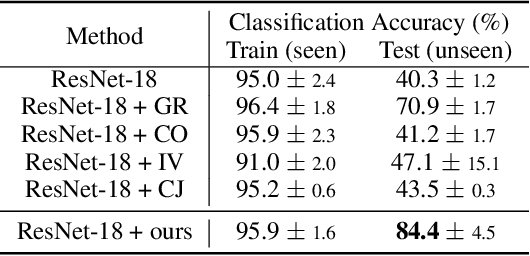
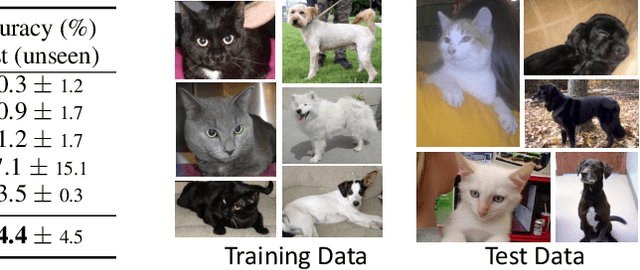

Abstract:Deep reinforcement learning (RL) agents often fail to generalize to unseen environments (yet semantically similar to trained agents), particularly when they are trained on high-dimensional state spaces, such as images. In this paper, we propose a simple technique to improve a generalization ability of deep RL agents by introducing a randomized (convolutional) neural network that randomly perturbs input observations. It enables trained agents to adapt to new domains by learning robust features invariant across varied and randomized environments. Furthermore, we consider an inference method based on the Monte Carlo approximation to reduce the variance induced by this randomization. We demonstrate the superiority of our method across 2D CoinRun, 3D DeepMind Lab exploration and 3D robotics control tasks: it significantly outperforms various regularization and data augmentation methods for the same purpose.
Why Does Hierarchy Work So Well in Reinforcement Learning?
Sep 23, 2019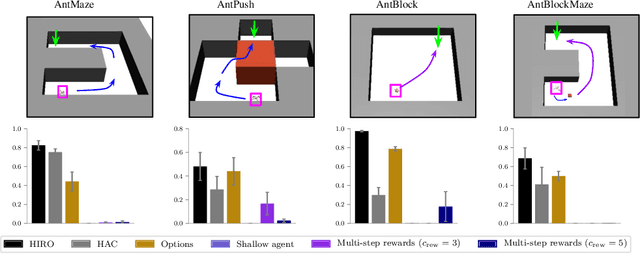
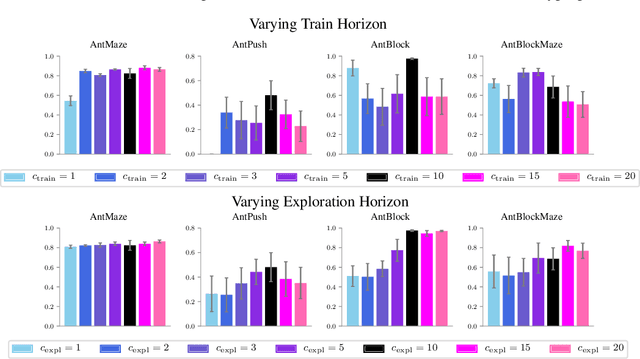

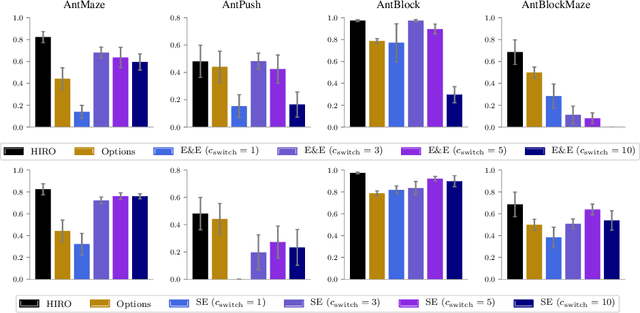
Abstract:Hierarchical reinforcement learning has demonstrated significant success at solving difficult reinforcement learning (RL) tasks. Previous works have motivated the use of hierarchy by appealing to a number of intuitive benefits, including learning over temporally extended transitions, exploring over temporally extended periods, and training and exploring in a more semantically meaningful action space, among others. However, in fully observed, Markovian settings, it is not immediately clear why hierarchical RL should provide benefits over standard "shallow" RL architectures. In this work, we isolate and evaluate the claimed benefits of hierarchical RL on a suite of tasks encompassing locomotion, navigation, and manipulation. Surprisingly, we find that most of the observed benefits of hierarchy can be attributed to improved exploration, as opposed to easier policy learning or imposed hierarchical structures. Given this insight, we present exploration techniques inspired by hierarchy that achieve performance competitive with hierarchical RL while at the same time being much simpler to use and implement.
Efficient Exploration with Self-Imitation Learning via Trajectory-Conditioned Policy
Jul 24, 2019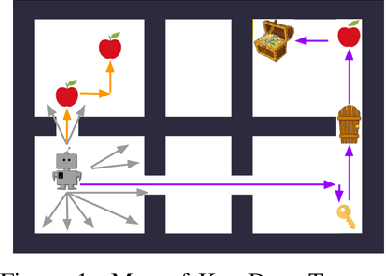


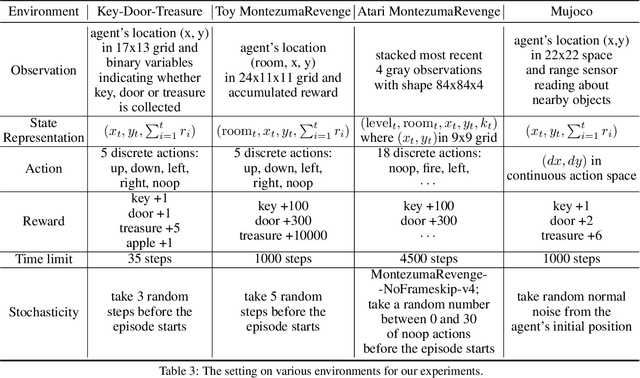
Abstract:This paper proposes a method for learning a trajectory-conditioned policy to imitate diverse demonstrations from the agent's own past experiences. We demonstrate that such self-imitation drives exploration in diverse directions and increases the chance of finding a globally optimal solution in reinforcement learning problems, especially when the reward is sparse and deceptive. Our method significantly outperforms existing self-imitation learning and count-based exploration methods on various sparse-reward reinforcement learning tasks with local optima. In particular, we report a state-of-the-art score of more than 25,000 points on Montezuma's Revenge without using expert demonstrations or resetting to arbitrary states.
Data-Efficient Learning for Sim-to-Real Robotic Grasping using Deep Point Cloud Prediction Networks
Jun 21, 2019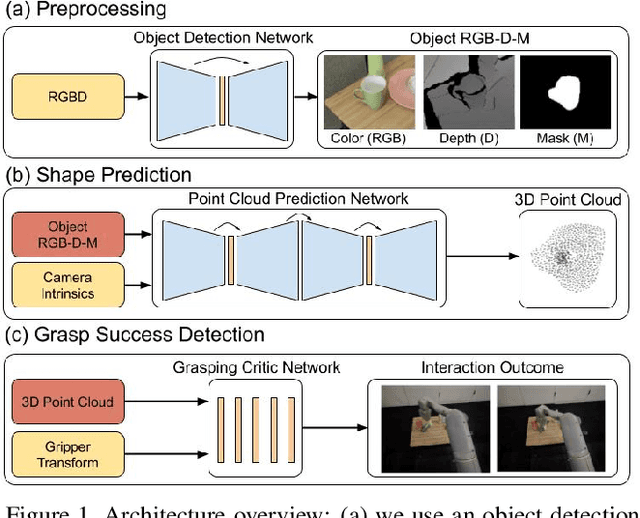
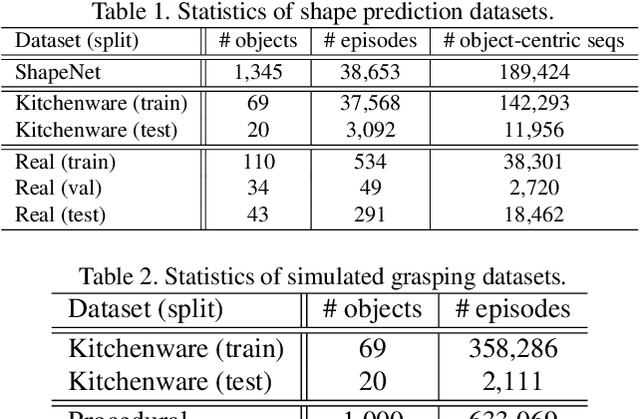
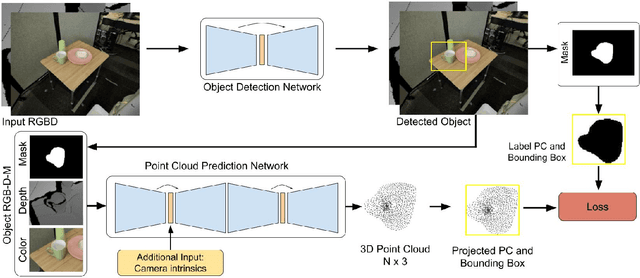
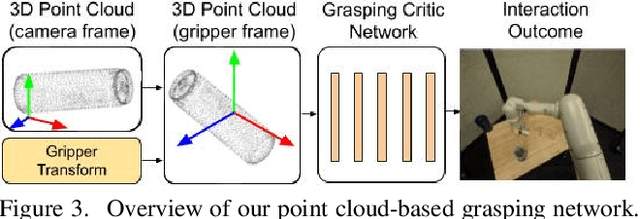
Abstract:Training a deep network policy for robot manipulation is notoriously costly and time consuming as it depends on collecting a significant amount of real world data. To work well in the real world, the policy needs to see many instances of the task, including various object arrangements in the scene as well as variations in object geometry, texture, material, and environmental illumination. In this paper, we propose a method that learns to perform table-top instance grasping of a wide variety of objects while using no real world grasping data, outperforming the baseline using 2.5D shape by 10%. Our method learns 3D point cloud of object, and use that to train a domain-invariant grasping policy. We formulate the learning process as a two-step procedure: 1) Learning a domain-invariant 3D shape representation of objects from about 76K episodes in simulation and about 530 episodes in the real world, where each episode lasts less than a minute and 2) Learning a critic grasping policy in simulation only based on the 3D shape representation from step 1. Our real world data collection in step 1 is both cheaper and faster compared to existing approaches as it only requires taking multiple snapshots of the scene using a RGBD camera. Finally, the learned 3D representation is not specific to grasping, and can potentially be used in other interaction tasks.
SemanticAdv: Generating Adversarial Examples via Attribute-conditional Image Editing
Jun 19, 2019



Abstract:Deep neural networks (DNNs) have achieved great success in various applications due to their strong expressive power. However, recent studies have shown that DNNs are vulnerable to adversarial examples which are manipulated instances targeting to mislead DNNs to make incorrect predictions. Currently, most such adversarial examples try to guarantee "subtle perturbation" by limiting its $L_p$ norm. In this paper, we aim to explore the impact of semantic manipulation on DNNs predictions by manipulating the semantic attributes of images and generate "unrestricted adversarial examples". Such semantic based perturbation is more practical compared with pixel level manipulation. In particular, we propose an algorithm SemanticAdv which leverages disentangled semantic factors to generate adversarial perturbation via altering either single or a combination of semantic attributes. We conduct extensive experiments to show that the semantic based adversarial examples can not only fool different learning tasks such as face verification and landmark detection, but also achieve high attack success rate against real-world black-box services such as Azure face verification service. Such structured adversarial examples with controlled semantic manipulation can shed light on further understanding about vulnerabilities of DNNs as well as potential defensive approaches.
Unsupervised Learning of Object Structure and Dynamics from Videos
Jun 19, 2019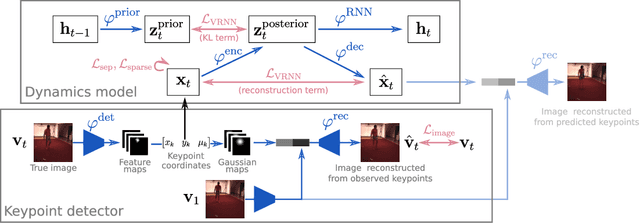

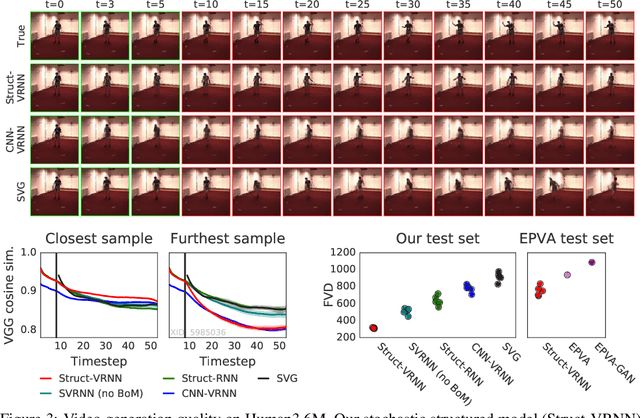

Abstract:Extracting and predicting object structure and dynamics from videos without supervision is a major challenge in machine learning. To address this challenge, we adopt a keypoint-based image representation and learn a stochastic dynamics model of the keypoints. Future frames are reconstructed from the keypoints and a reference frame. By modeling dynamics in the keypoint coordinate space, we achieve stable learning and avoid compounding of errors in pixel space. Our method improves upon unstructured representations both for pixel-level video prediction and for downstream tasks requiring object-level understanding of motion dynamics. We evaluate our model on diverse datasets: a multi-agent sports dataset, the Human3.6M dataset, and datasets based on continuous control tasks from the DeepMind Control Suite. The spatially structured representation outperforms unstructured representations on a range of motion-related tasks such as object tracking, action recognition and reward prediction.
Zero-Shot Entity Linking by Reading Entity Descriptions
Jun 18, 2019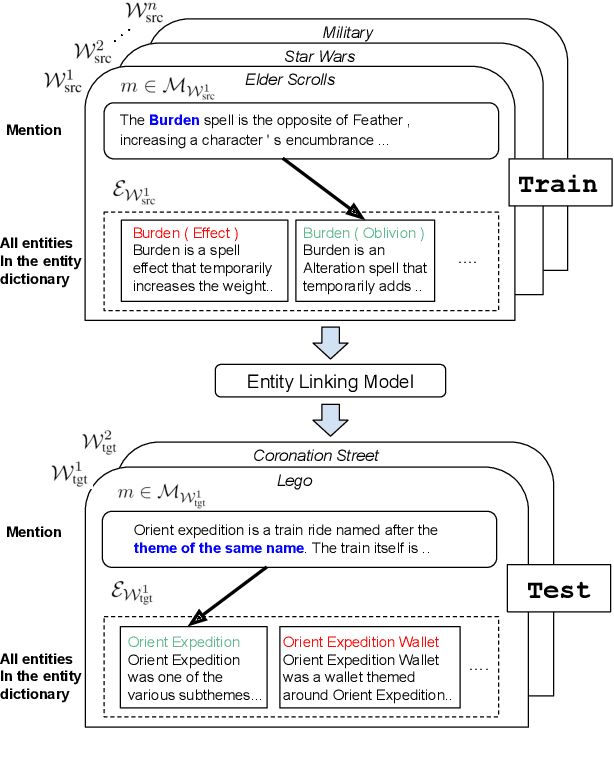

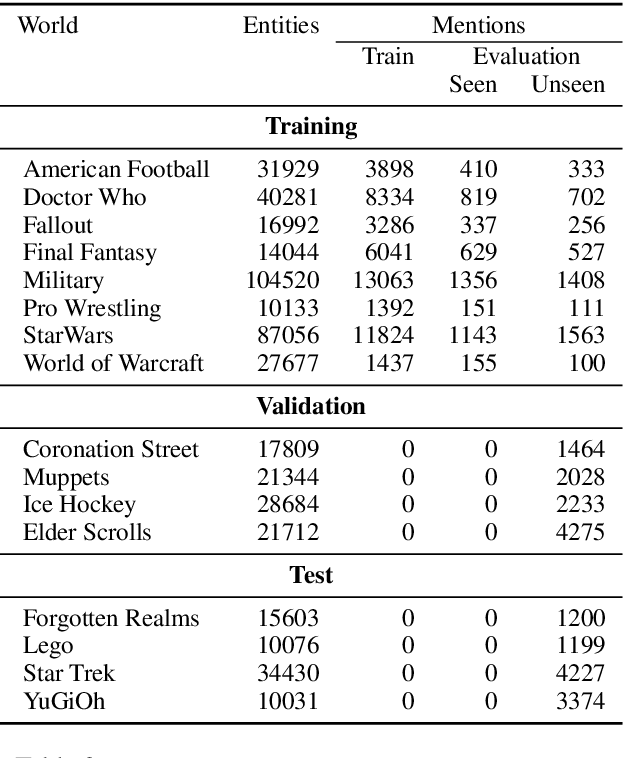

Abstract:We present the zero-shot entity linking task, where mentions must be linked to unseen entities without in-domain labeled data. The goal is to enable robust transfer to highly specialized domains, and so no metadata or alias tables are assumed. In this setting, entities are only identified by text descriptions, and models must rely strictly on language understanding to resolve the new entities. First, we show that strong reading comprehension models pre-trained on large unlabeled data can be used to generalize to unseen entities. Second, we propose a simple and effective adaptive pre-training strategy, which we term domain-adaptive pre-training (DAP), to address the domain shift problem associated with linking unseen entities in a new domain. We present experiments on a new dataset that we construct for this task and show that DAP improves over strong pre-training baselines, including BERT. The data and code are available at https://github.com/lajanugen/zeshel.
 Add to Chrome
Add to Chrome Add to Firefox
Add to Firefox Add to Edge
Add to Edge